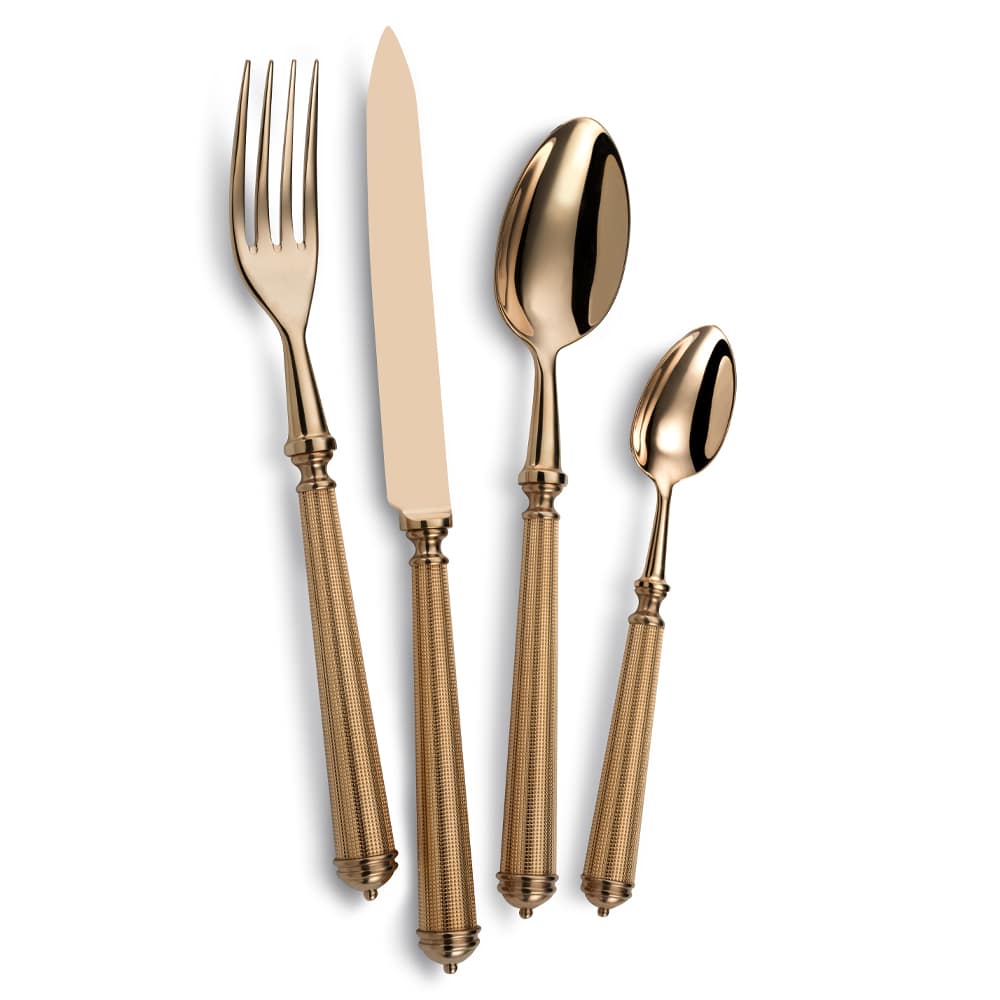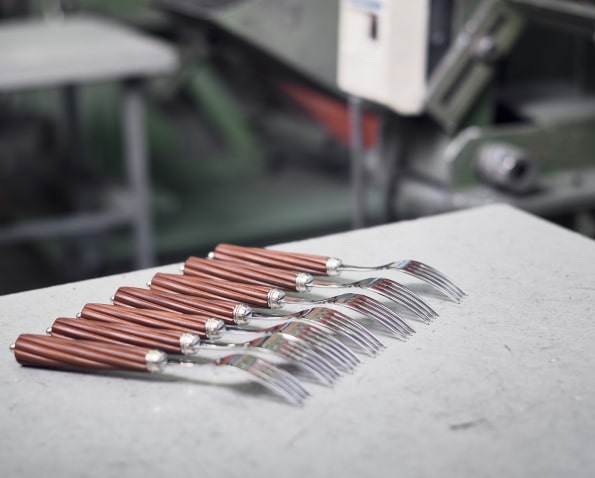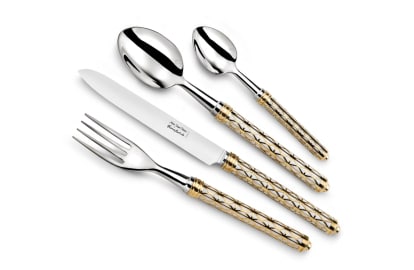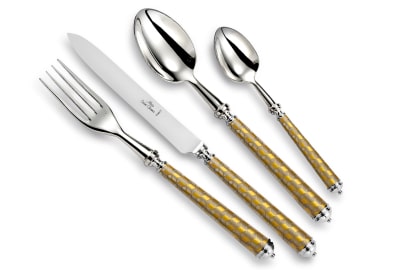The art of the table sets the table to embellish French heritage. Gone are the days when diners enjoyed themselves with their fingers. Fortunately, cutlery has made its appearance over the centuries. But the use of cutlery for fine dining has been a gradual process. From the first wooden kitchen utensils to the silver spoon in the mouth of a well-born elite, each era has shaped the history of the art of the table.
The beginnings of tableware in medieval times
Prehistoric man already used a spoon with a wide handle. They also carved knives for hunting. The Greeks and Romans brought a certain luxury to ancient tables with the rise of pottery. But the history of the art of the table began in the Middle Ages, with festive meals reserved for the very rich.
Eating your meal with your fingers
In those days, cutlery as we know it today had yet to appear on the table. Dishes were served on wooden plates or bread, and diners ate with their fingers.
Personal knife, but shared crockery
Everyone uses their knives to prick food, just as they would a fork. The wooden or metal spoon is mainly used to eat dishes in sauce. And glasses are shared with neighbors. Crockery remains relatively simple. It reflects the rudimentary practices of the time.
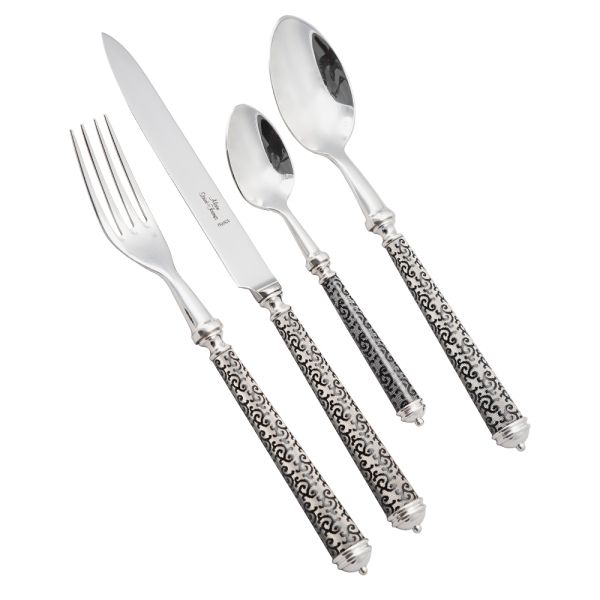
The Renaissance brought French-style service to the table
During the Renaissance, the art of the table underwent a significant evolution. Individual plates became more common, but the use of cutlery remained rare, even among the nobility.
A history of forks attributed to Italy
The introduction of the fork in France, allegedly under the influence of Catherine de Médicis, future wife of Henri II, marked a turning point in eating habits. The two-pronged fork revolutionized the way people ate. It enabled people to grasp food without touching it, thus promoting hygiene. But many people refused to carry a fork to their mouth for fear of injuring themselves.
All dishes placed on the table
At the time, French-style service covered the table with numerous hot and cold dishes. Served at the same time, all these dishes underline the abundance and diversity of the meal. But glasses and bottles are still not placed on the table.
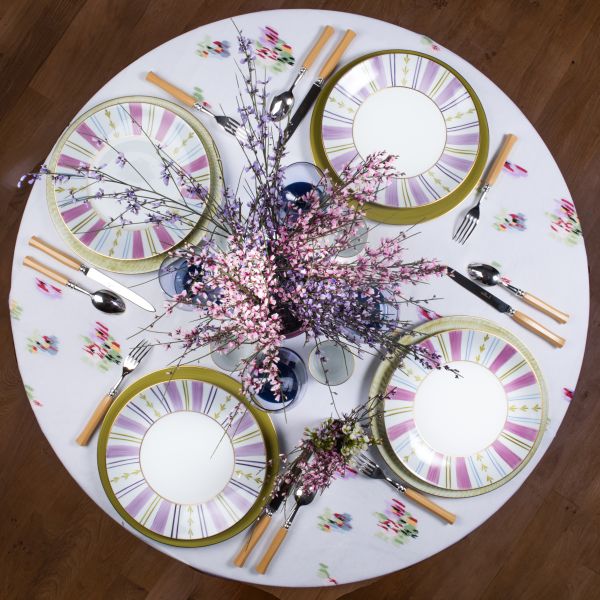
The Age of Enlightenment brings a sparkle to cutlery and flatware
In the 18th century, under the reign of Louis XV, silver and precious metal cutlery became symbols of social status. Each guest at the table was given a plate, knife, fork and spoon.
The evolution of cutlery
At the request of Richelieu, who was annoyed by bad manners, the knife blade became rounder in the 17th century. The spoon was perfected, with a finely worked wooden or silver handle. As for the fork, it now had four prongs, and its use became more widespread.
Knives, prized objets d’art
French cutlers produce pieces of exceptional quality and beauty. Knives are adorned with precious stones. Tableware enriches the art of the table, with porcelain plates embellished with gold.
The luxury of the Belle Époque, the years of opulence in the art of the table
The Belle Époque epitomizes elegance and refinement in the history of the art of the table.
Black and white table for timeless elegance
Create a chic, minimalist table in black and white, with ebony-handled cutlery. White tablecloths and napkins set off glossy black textured plates. Black candlesticks host white candles to reinforce this elegant, modern theme.
Aesthetics at the service of meals
The dining room is the place to be. Meals rival each other in luxury and sophistication. The tables, beautifully laid, are resplendent. Finely chiselled silver cutlery, delicately decorated porcelain plates and crystal glasses adorn lace tablecloths.
The rise of gastronomy and table decoration
In Paris, the number of restaurants multiplied. Cuisine became a work of art, orchestrated by the greatest chefs of the time. Every banquet was a showcase for French culture and the art of the table. This trend continued into the 19th century, with a more ostentatious style. The discovery of the electrolysis process in a silver bath made silver-plated flatware more accessible.
The 20th century continues the history of the art of the table by renewing traditions
As we enter the 20th century, the table is influenced by the Art Deco of the Roaring Twenties.
Combining business with pleasure
Bold geometric lines and stylized motifs set the tone, integrating the design of cutlery, plates and glasses to create decorative utensils.
Back to basics
The post-war years brought a functional simplicity bordering on sobriety. Cutlery and crockery took on more streamlined forms. But materials such as stainless steel and silver retain their place of choice on the table. This was also the century of global influences. The fusion of cultures enriched the art of the table.
The history of the art of the table reflects French society. Its evolution over the centuries illustrates changes in culinary and social practices. Throughout history, the quality of cutlery and the beauty of tableware have always contributed to the elegance of a beautifully laid table. Alain Saint-Joanis embodies excellence and refinement in the art of the table, perpetuating exceptional craftsmanship. Treat your guests to a unique experience. Whether you’re hosting an intimate dinner party or a grand reception, Alain Saint-Joanis transforms every meal into a special occasion.
